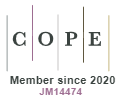Adoption of Pmo as a Tool for i.t. Project Management Control: a Case Study of a Brazilian Telecommunications Service Provider
DOI:
https://doi.org/10.5585/gep.v1i1.20104Keywords:
Adoption of Pmo as a Tool for i.t. Project Management Control, a Case Study of a Brazilian Telecommunications Service ProviderAbstract
The area of Information Technology (IT) is responsible for software development and for the information systems (IS) essential to the competitiveness of large enterprises. Despite growing maturation of project management as a field, high failure rates for project development and IS implementation are still common. Thus, one of the challenges faced by the IT area in businesses is the adoption of mechanisms that can guarantee the efficiency of project management. This article describes how the implementation of a Project Management Office (PMO) can help organizations to reach greater efficiency and efficacy in the execution and project control of the IT/IS function. We undertook an ample review of pertinent literature, identifying different types of Project Management offices and applied this literature to a case study of the adoption of a PMO as a support and management tool for f IT/SI in a Brazilian telecommunication service provider. The research helped to identify the critical success factors, as well as the benefits and difficulties associated with the practices of management control of IT/IS projects performed by a PMO.References
Barcaui, A. B. e Quelhas, O. (2004, julho). Perfil de escritórios de gerenciamento de projetos em organizações atuantes no Brasil. Revista Pesquisa e Desenvolvimento Engenharia de Produção, 2, 38-53.
Bernstein, S. (2000). Project offices in practice. Project Management Journal, 31(4), 4-6.
Bigelow, D. (2004). The future is EPM. PM Network, 18(4), 24-26.
Cooke-Davies, T. (2001, November/December). Managing benefits: the key to project success. Project Manager Today, 1-3.
Foti, R. (2003). Destination: competitive advantage. PM Network, 17(8), 28-36.
Gonzáles, F.; Rodrigues, I. e Sbragia, R. (2002). Escritório de gerenciamento de projetos: teoria e prática”. [Working Paper nº 02/007], Departamento de Administração, Universidade de São Paulo - USP, São Paulo, SP.
Hallows, J. (2002). The Project Management Office toolkit. New York: AMACOM.
Hill, G. M. (Ed.). (2004). The complete Project Management Office handbook. Boca Raton, FL, USA: Auerbach Publications.
Johnson, J. and Horsey, D. C. (2001, junho). The IT war room. Software Magazine. Recuperado em 10 janeiro, 2010, de http://findarticles.com/p/articles/mi_m0SMG/is_3_21/ai_76939573/?tag=content;col1.
Kendall, G. I. and Rollins, S. C. (2003). Advanced Project Portfolio Management and the PMO: multiplying ROI at warp speed. Boca Raton, FL, USA: J. Ross Publ.
Miranda, E. (2003). Running the successful hi-tech project office. Norwood, MA, USA: Artech House.
OPM baseline study (2004). OPM baseline study - 2003 results overview. Recuperado em 23 abril, 2004, de http://www.interthink.ca/research/home.html.
PMI (2003). Organizational project management maturity model OPM3 knowledge foundation. Newtown Square, PA, USA: Project Management Institute (PMI).
PMI (2004). A guide to the project management body of knowledge - PMBOK® 2004 Guide (3a. ed.). Newtown Square, PA, USA: Project Management Institute (PMI).
PMI-MA (2004). Hot topics: pros and cons of project offices. Project Management Institute Members Area. Recuperado em 23 abril, 2004, de https://secure.pmi.org/memberapp/code/premium_content/kwc/KWCtopic_pmo.asp.
Rad, P. F. and Levin, G. (2002). The advanced project management office: a comprehensive look at function and implementation. Boca Raton, FL, USA: St. Lucie Press.
Schmidt, R.; Lyytinen, K.; Keil, M.; and Cule, P. (2001). Identifying software project risks: an international Delphi study. Journal of Management Information Systems, 17(4), 5-36.
SEI - Software Engineering Institute (2002). Capability Maturity Model® Integration (CMMI) Version 1.1. Pittsburgh, PA, USA: Carnegie Mellon University.
TMFORUM (2011). Business Process Framework (eTOM). TM Forum. Recuperado em 10 de janeiro, 2011, de http://www.tmforum.org/BestPracticesStandards/BusinessProcessFramework/1647/Home.html.
Wateridge, J. (1995). IT projects: a basis for success. International Journal of Project Management, 13(3), 169-172.
Yeo, K. T. (2002). Critical failure factors in information system projects. International Journal of Project Management, 20(3), 241-246.
Yin, R. K. (2001). Estudo de caso: planejamento e métodos. (2a. ed). São Paulo: Saraiva.
Downloads
Published
How to Cite
Issue
Section
- Abstract 762
- PDF (Português (Brasil)) 584






